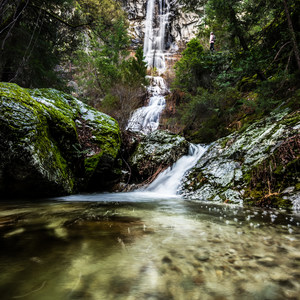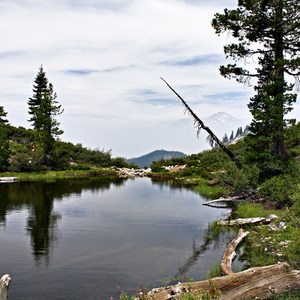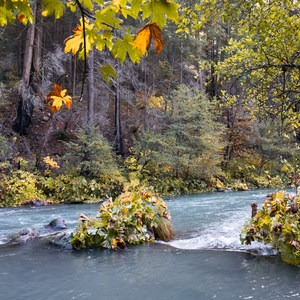You are here
The snowshoe and hike to Castle Dome offers incredible views of Mount Shasta and the surrounding Shasta-Trinity National Forest on a clear day. During a storm the trek becomes blanketed in clouds, giving off a very eerie and mysterious feeling as the towering crags reveal themselves for fleeting seconds. The beginning section of the trail is more covered, less snowpacked, and is usually doable with hiking boots. The terrain becomes more exposed and rocky as you gain more elevation and pass the tree line. This area is the perfect spot to strap on snowshoes and continue to the base of the crags and Castle Dome. The 2.8-mile trail is fairly consistent in incline and gains nearly 2,200 feet in elevation. Technically the end of this trail is at the base of Castle Dome, but the eager adventurer will find plenty of opportunities for exploration. All throughout this area are new perspectives of the crags and surrounding landscapes. Some spots provide for a perfect view of Castle Dome and Mount Shasta. Others will have you looking several hundred feet down a cliff from behind the safety of a cable.
The first sight of Castle Crags from Interstate 5 is an astonishing one as the granite spires suddenly appear out of the thickly forested mountains. These rocks were formed approximately 170 million years ago when molten rock rose from the Earth's mantle. The rock quickly cooled and solidified to form granite peaks. Since then weather and erosion has chiseled and sculpted the granite to leave the spires that are visible today.
Castle Crags has an abundant diversity of plant and animal life. The area is home to six ecological habitats that converge within the park. Those with sharp eyes and a little bit of luck may spot mountain lions, spotted skunk, or ringtail among other elusive mammal species. Two endemic plant species, Castle Crags harebell and Castle Crags ivesia, are also found within the park along with 13 species of wild orchid.
Shasta National Forest and Castle Crags has a rich but sad Native American history. The Okwanuchu Shasta people who resided here held a deep respect for the crags and believed the rocks were inhabited by spirits who took human forms. If you look closely you can see the shapes of faces in the rock, such as in the popular area is known as Ogre Face. The California Gold Rush created a mass migration of foreigners into the Trinity Mountains that completely overwhelmed and displaced native populations. Subsequent violence, conquest, and infectious diseases left two-thirds of the indigenous population dead, and many other native people were forced to leave. After the Gold Rush, a popular hotel was established here as well as a bottling company, which utilized the fresh spring water found in the park. It wasn't until 1933 that this area would become a state park.











Comments
Sign In and share them.